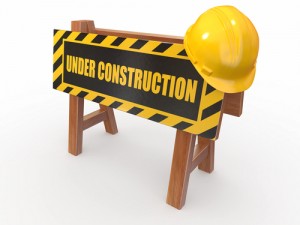Faulty Workmanship
Silica Dust Damage Held Barred by Pollution and Faulty Workmanship Exclusions in New York
Dick Bennett | Cozen O'Connor
March 16, 2015
Building construction frequently generates silica dust, a substance that can cause lung disease and other respiratory problems. Abrasive sand-blasting or jack hammering as well as concrete drilling and block cutting can lead to its release. In Broome Cty. v. Travelers Indem. Co., – N.Y.S.2d –, 125 A.D.3d 1241, 2015 WL 790256, 2015 N.Y.App.Div. LEXIS 1706 (N.Y.App.Div., Feb. 26, 2015), a unanimous panel from New York’s intermediate level appellate court held that the pollution and faulty workmanship exclusions in a first-party policy barred coverage for the property damage when silica dust spread throughout an office building due to construction activities nearby.
 The insured was Broome County, the owner of a building in a government complex. During the construction of a parking garage below the structure, silica dust migrated up an elevator shaft and disbursed throughout all floors of the building. It was undisputed that inadequate dust barriers were what allowed the silica to infiltrate the shaft – it was “a flawed process on the part of the contractors that led to the loss at issue.” Broome County made claim for the resulting property damage, but its insurer, Travelers Indemnity, denied the claim, invoking the two exclusions discussed above.
The insured was Broome County, the owner of a building in a government complex. During the construction of a parking garage below the structure, silica dust migrated up an elevator shaft and disbursed throughout all floors of the building. It was undisputed that inadequate dust barriers were what allowed the silica to infiltrate the shaft – it was “a flawed process on the part of the contractors that led to the loss at issue.” Broome County made claim for the resulting property damage, but its insurer, Travelers Indemnity, denied the claim, invoking the two exclusions discussed above.
After litigation ensued, the trial court denied Travelers’ motion to dismiss, finding that the pollution exclusion did not operate to bar coverage and that there were factual issues with respect to whether the faulty workmanship exclusion did so. An appeal followed.
The pollution and faulty workmanship exclusions used standard first-party terminology. The former barred coverage for the “[d]ischarge, dispersal, seepage, migration, release or escape of ‘pollutants.’ ” As defined, the term “pollutants” meant “any solid, liquid, gaseous or thermal irritant or contaminant, including smoke, vapor, soot, fumes, acids, alkalis, chemicals, waste and any unhealthy or hazardous building materials (including but not limited to asbestos and lead products or materials containing lead).” The latter operated to exclude “loss or damage caused by or resulting from . . . [f]aulty, inadequate or defective . . . [2] . . . workmanship, repair, construction, renovation [or] remodeling.”
Last month, the trial courts decision was reversed. Writing for the appellate panel, Justice William McCarthy stated that Broome County was “entitled to summary judgment based on the pollution exclusion clause.” The court rejected arguments bottomed on third-party liability cases, holding that “if the words ‘[d]ischarge, dispersal, seepage, migration, release or escape’ are read as not intended to describe short migratory events where the relevant contaminant remains on the plaintiff’s property and does damage to it, then the exclusion has no significance at all in [a] first-party policy.” According to the opinion, “the only reasonable reading that gives the pollution exclusion . . . a meaning under a first-party insurance policy” was one that precludes coverage for the loss.
The panel was equally adamant that the faulty workmanship exclusion barred coverage. The insured contended that the exclusion was ambiguous because the word “workmanship” could be read to refer to either the flawed quality of a finished product or a flawed process in the construction work. According to Justice McCarthy, however, that argument considers the term workmanship out of context to create an ambiguity. Considering that term in context leads to the reasonable conclusion that the relevant clause unambiguously excludes losses resulting from faulty workmanship under both definitions.
The opinion pointed out that the full exclusion had four sub-parts, and that two of the other three unambiguously referred to processes while the third dealt with the resulting finished product. In Justice McCarthy’s words:
Reading all of these subdivisions together and considering the clause as a whole, including its use of the disjunctive “or,” the average insured would reasonably expect the exclusion to apply to faulty workmanship whether it was caused by a flawed process or measured by the flawed quality of the finished product. . . . [A]n ambiguity is not created if the policy is written to exclude coverage under both definitions.
The content of this article is intended to provide general information and as a guide to the subject matter only. Please contact an Advise & Consult, Inc. expert for advice on your specific circumstances.
SOURCE: propertyinsurancelawobserver.com
